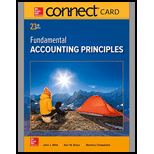
1)
Introduction:
Ratio Analysis
• Ratio analysis is a study of several key metrics of a company based on the data presented in its’ financial statements with an objective to evaluate the financial health of a company.
• It is essential for investors, stakeholders, government bodies etc. to evaluate the key metrics of an entity in order to ensure that the company fulfills the going concern principle and displays financial stability.
The key metrics mentioned above include the following:
•
• Current assets are assets that are convertible to cash within a period of one year or less. Current liabilities are liabilities that need to be discharged within a period of one year or less.
• Net Profit Margin – It is a measure of the total Profit earned from sales after deduction of operating expenses, selling and distribution expenses and other indirect costs.
• It is often the most sought after financial measure to evaluate profitability since it gives a clear indication of the
• Total Asset Turnover – A measure of the correlation between the Total assets employed and the turnover of the business.
• It seeks to evaluate the volume of sales in relation to the assets employed. It gives an indication of the sales in relation to the investment made in the assets and overall capital contribution to the company in the form of Assets.
To Calculate:
a) Current Ratio,
b) Net Profit Margin and,
c) Sales to Assets Ratio in Dollar and Yen
2)
Introduction:
Ratio Analysis
• Ratio analysis is a study of several key metrics of a company based on the data presented in its’ financial statements with an objective to evaluate the financial health of a company.
• It is essential for investors, stakeholders, government bodies etc. to evaluate the key metrics of an entity in order to ensure that the company fulfills the going concern principle and displays financial stability.
The key metrics mentioned above include the following:
• Current Ratio – It is a measure of the relation between the current assets and current liabilities and seeks to measure the ability of the business to fulfill its short term obligations.
• Current assets are assets that are convertible to cash within a period of one year or less. Current liabilities are liabilities that need to be discharged within a period of one year or less.
• Net Profit Margin – It is a measure of the total Profit earned from sales after deduction of operating expenses, selling and distribution expenses and other indirect costs.
• It is often the most sought after financial measure to evaluate profitability since it gives a clear indication of the Profit / Loss of the company at the end of the reporting period.
• Total Asset Turnover – A measure of the correlation between the Total assets employed and the turnover of the business.
• It seeks to evaluate the volume of sales in relation to the assets employed. It gives an indication of the sales in relation to the investment made in the assets and overall capital contribution to the company in the form of Assets.
To Calculate:
Review results of the key metrics
Want to see the full answer?
Check out a sample textbook solution
Chapter 17 Solutions
Connect Access Card for Fundamental Accounting Principles
- Compute the amount of direct material used during September .arrow_forwardWhich of the following is an example of an intangible asset? a) Landb) Buildingc) Patentd) Equipment need helparrow_forwardI am looking for the correct answer to this financial accounting question with appropriate explanations.arrow_forward
- What is the net realisable value of accounts receivable?arrow_forwardDuring the year, Kowalski Company made an entry to write off a $7,500 uncollectible account. Before this entry was made, the balance in accounts receivable was $280,000 and the balance in the allowance account was $22,500. The net realizable value of accounts receivable after the write-off entry was: A. $257,500. B. $184,000. C. $176,000. D. $288,000.arrow_forwardYou are given the following information about Zephyr Company in 2021: The Company’s fixed costs are expected to be $195,000, the selling price per unit is $17, and the variable cost per unit is $5. The company wants to earn a net income of $84,000 during 2021. The required sales units to meet the target net income during 2021 is _.arrow_forward

 AccountingAccountingISBN:9781337272094Author:WARREN, Carl S., Reeve, James M., Duchac, Jonathan E.Publisher:Cengage Learning,
AccountingAccountingISBN:9781337272094Author:WARREN, Carl S., Reeve, James M., Duchac, Jonathan E.Publisher:Cengage Learning, Accounting Information SystemsAccountingISBN:9781337619202Author:Hall, James A.Publisher:Cengage Learning,
Accounting Information SystemsAccountingISBN:9781337619202Author:Hall, James A.Publisher:Cengage Learning, Horngren's Cost Accounting: A Managerial Emphasis...AccountingISBN:9780134475585Author:Srikant M. Datar, Madhav V. RajanPublisher:PEARSON
Horngren's Cost Accounting: A Managerial Emphasis...AccountingISBN:9780134475585Author:Srikant M. Datar, Madhav V. RajanPublisher:PEARSON Intermediate AccountingAccountingISBN:9781259722660Author:J. David Spiceland, Mark W. Nelson, Wayne M ThomasPublisher:McGraw-Hill Education
Intermediate AccountingAccountingISBN:9781259722660Author:J. David Spiceland, Mark W. Nelson, Wayne M ThomasPublisher:McGraw-Hill Education Financial and Managerial AccountingAccountingISBN:9781259726705Author:John J Wild, Ken W. Shaw, Barbara Chiappetta Fundamental Accounting PrinciplesPublisher:McGraw-Hill Education
Financial and Managerial AccountingAccountingISBN:9781259726705Author:John J Wild, Ken W. Shaw, Barbara Chiappetta Fundamental Accounting PrinciplesPublisher:McGraw-Hill Education





